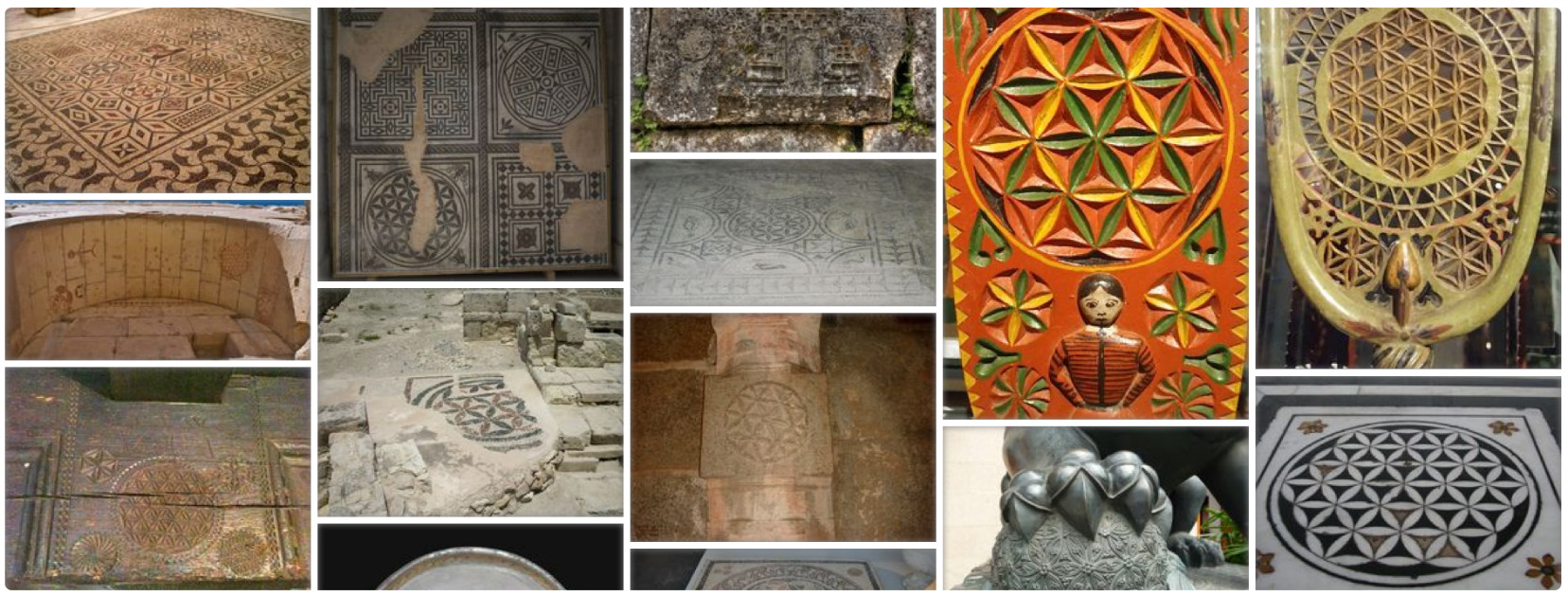1500 AD and still going strong
Much later geometrical patterns were used in the Arabic culture as an art itself. This is due to the fact that in their tradition God, prophets or even people and animals were not allowed to be drawn. For example, Ottomans used the FOL on cemetery works (pic. 6.2.10), the sarcophagus (pic. 6.2.11), tombs and Seljuk caravanserai gates. Orthodox Christians in Patmos island applied sacred geometry above the chapel door lunette (pic. 6.3.4, 6.3.5), thus appreciating the symbology behind the intersecting circles. You can see a more complex figure on the lunette only when zooming into the image, which just adds tickling enigma around the symbol.
Multicolor opaque glass pavement (pic. 6.2.7) in the Westminster Abbey Gothic church incorporates the FOL symbol. It is well known that Vesica Piscis1 is the basis of the FOL geometry and it is used widely on iconography though in the Orthodox tradition. In Orthodox symbolism, Vesica Piscis is rather called a mandorla2 (almond) or a nimbus, which refers to the halo around the Saint. The FOL tradition possibly goes to the beginning of the Christian church. But surely, the tradition of the FOL can be traced much further to the history.
At this point, it is good to lift up once more the specialty of the FOL symbol and at the same time its undiscovered history. S. Limani in his An Eleventh Century Shipwreck Vol. 1 book3 lists several lead net sinkers that have the six-petal rosette symbol on them. He writes:
...regardless of its purpose, the rosette, rare among the Jewish remains of Greece and Rome, is a particularly eastern Jewish phenomenon... rosettes, used as ornament details on fifth and sixth century churches, were a particularly eastern Christian phenomenon as well, being peculiar to northern Syria.
The formation of the FOL is simple, as noted before. E.R. Goodenough, the author of the monumental thirteen volume work about the Jewish and Christian symbolism4, calls the six-petal rosette
the most banal of all designs
as quoted by Limani. Neither Goodenough or Limani knows hardly anything about the FOL in its full pattern. Nor do they know six-petal rosette form's from much older history.
If I would really need to guess the origin of the geographical area, where the FOL was first used in its fullest magnitude, my bet would be on upper Mesopotamia. So rich is the tradition there of using geometrical forms, especially the usage of the six-petal rosette. And the tradition has lasted long and is rich in occurrences.
Finally, my historic survey ends at around 1500 AD, when Leonardo da Vinci used several pages on his sketchbook (pic. 6.2.13) to investigate the properties of the hexagonal net/grid when he studied the theory of lunes5. He was interested in the proportions of such a grid because it can be found from nature. For example, in bumble bee cells, a turtle's carapace and snowflakes. The theory of lunes, i.e. geometric figures formed by the intersection of two circular arcs, was invented by the Greek mathematician Hippocrates of Chios in 440 BC6. Both Leonardo and Hippocrates were investigating lunes to unveil the ancient "squaring the circle" enigma.
